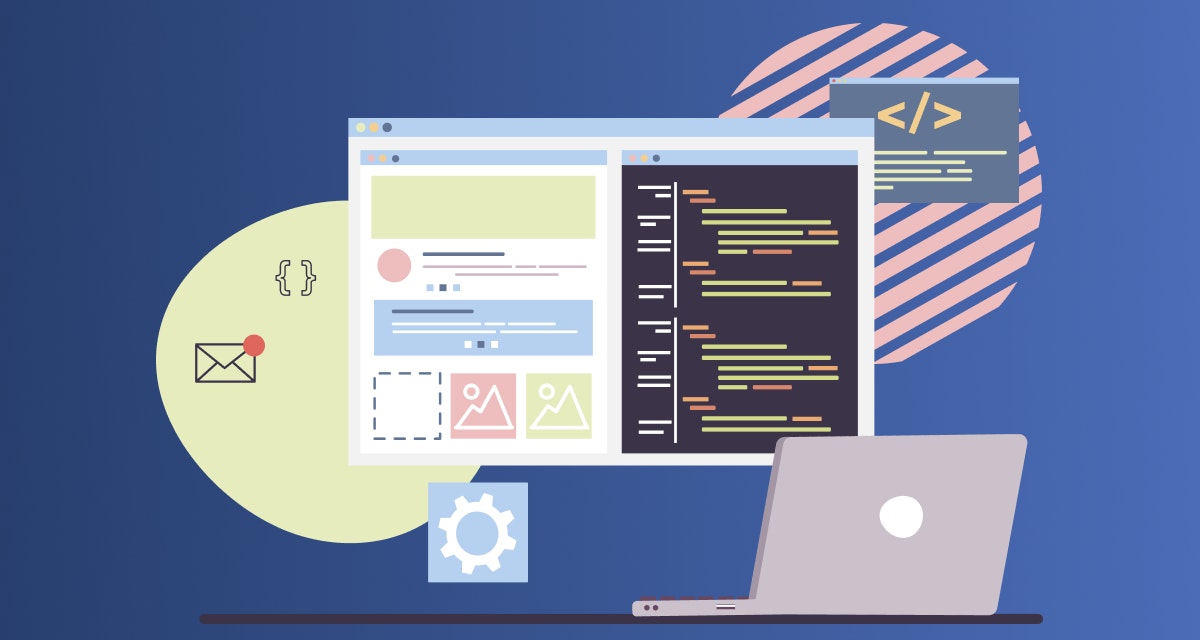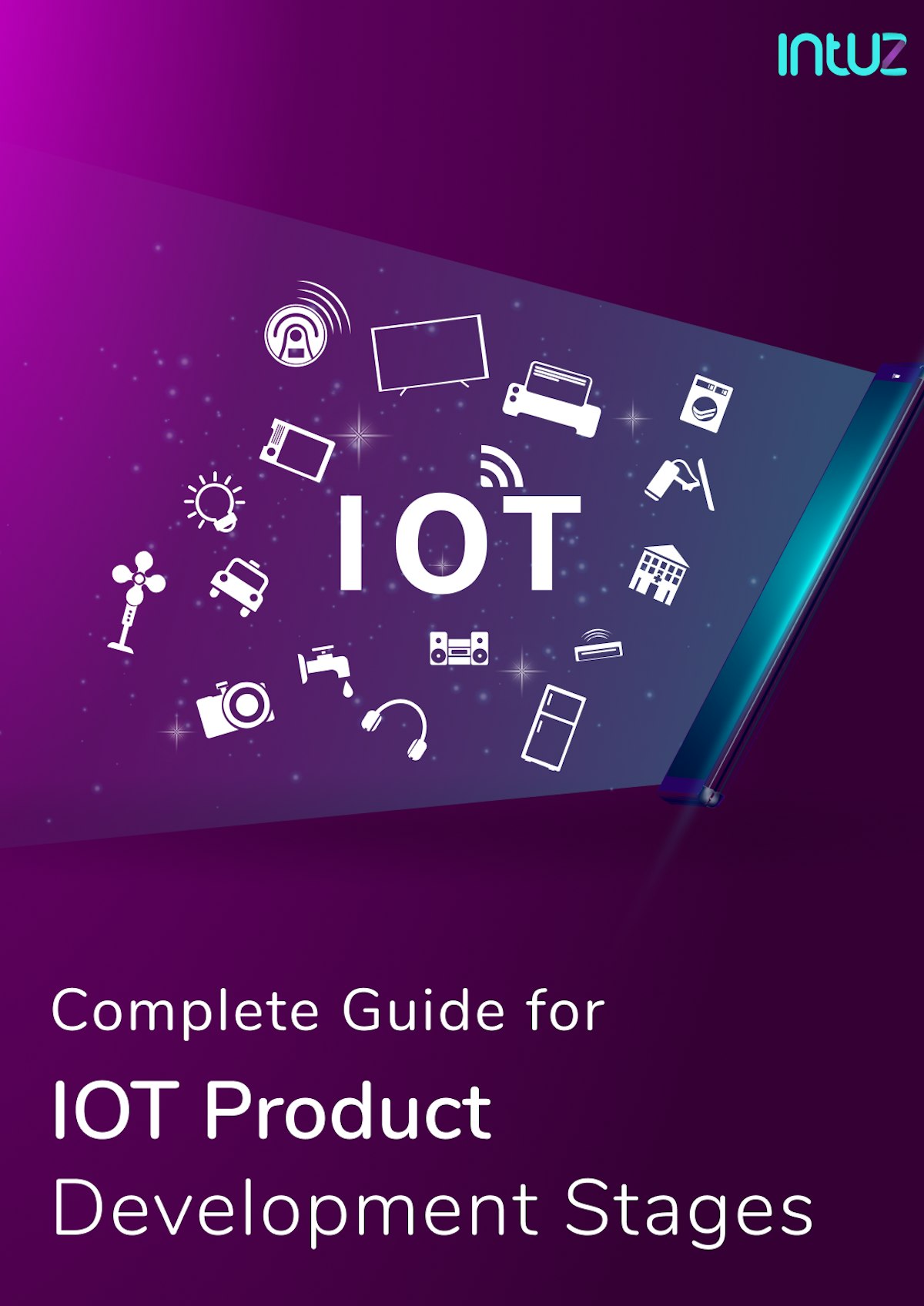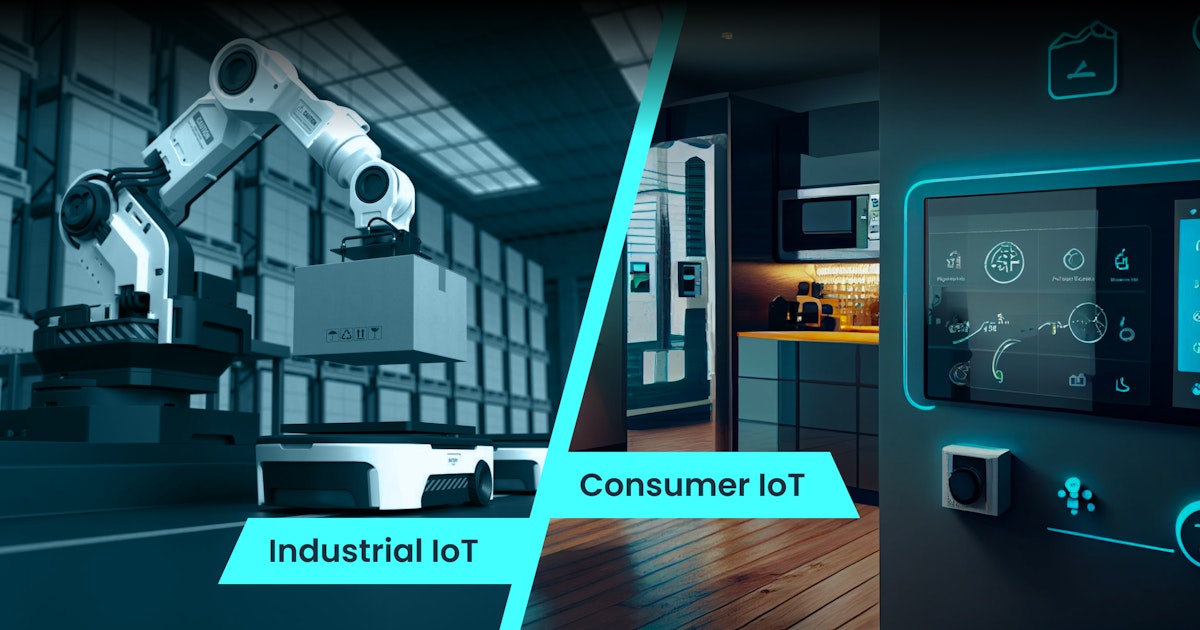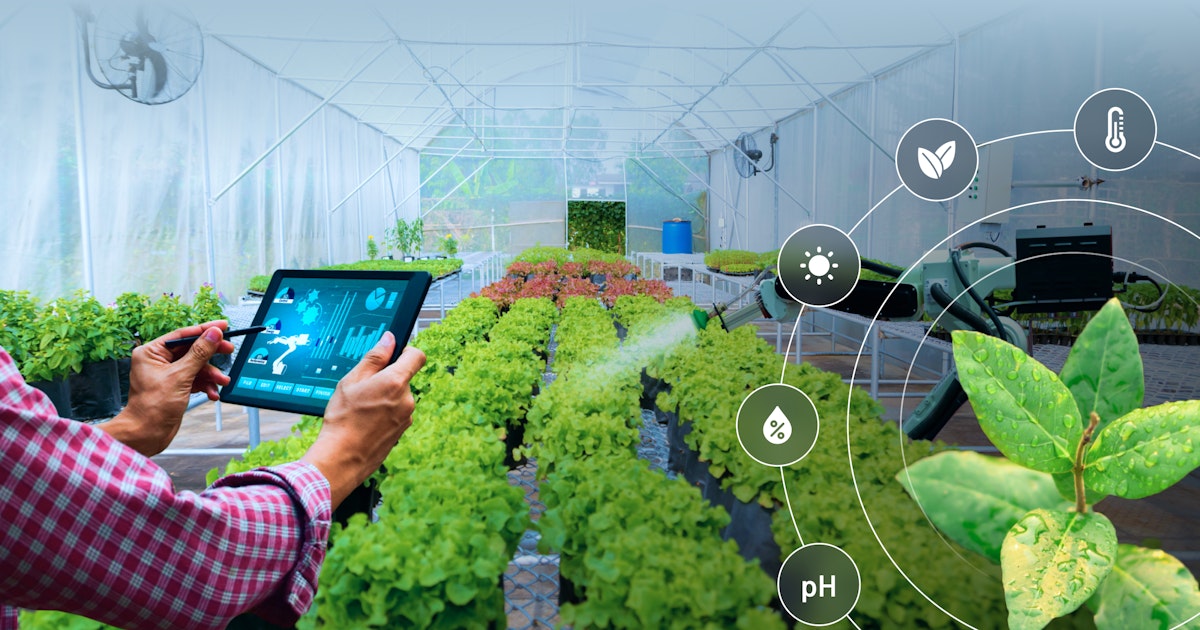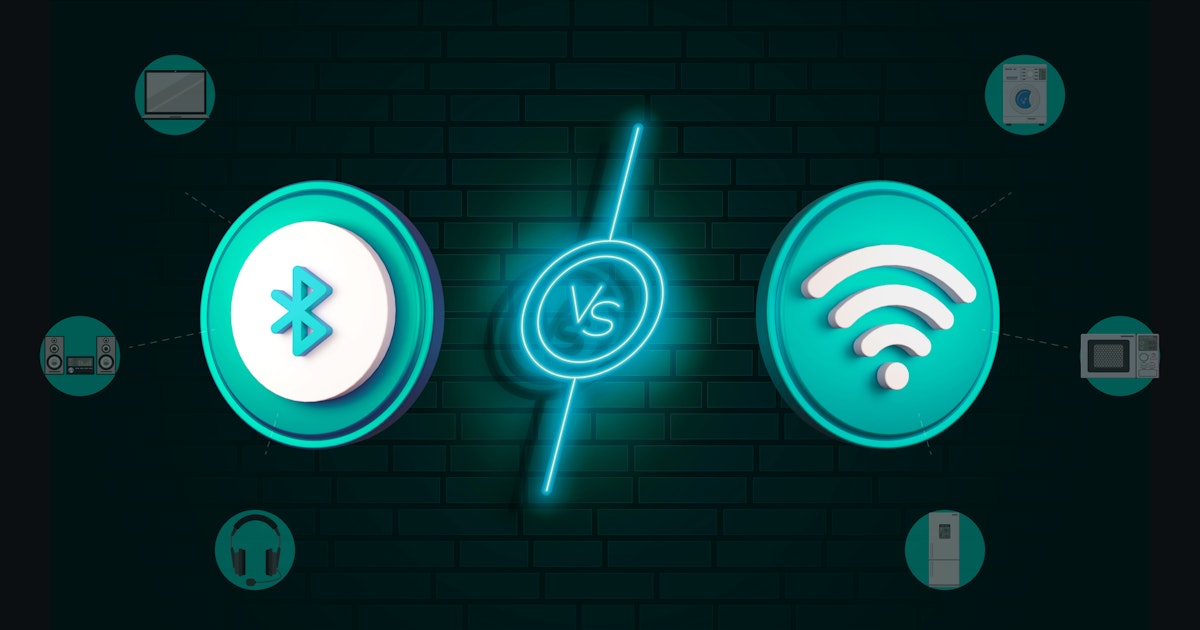Table of Content
The Internet of Things (IoT) is described as the network of physical objects or “things” embedded with software, sensors, servers, and other technologies with an aim to connect and exchange data with other devices and applications over the internet.
IoT devices can range from being sophisticated industrial tools to simple household objects. Quite fascinatingly, according to Statista, the number of IoT-connected devices is expected to be more than 25.4 billion in 2030.
The importance of IoT
There is no doubt in our minds that IoT is one of the essential languages in this century. Could we have imagined giving instructions to Alexa to play music or switch on/off the kitchen lights? Or patients wearing fitness bands to keep track of their parameters? Or fleets using smart contracts to monitor the use of oil and other stuff they transport?
Thanks to the technology, smart devices and systems can exchange data to a cloud-based solution or an off-site system for time-sensitive and meaningful analytics using components with low energy consumption, which are easy to install and function as per industry standards.
But there is a lot more to IoT than just “communication.” The technology helps:
Reduce the cost of production and maximize returns
Guarantee high-quality data and secure processing
Make analytics decisions faster and more accurate
Minimize human efforts in many life aspects
Enable a far more superior client experience
Promote efficient resource utilization
Boost real-time product marketing
In a nutshell, IoT has made seamless communication possible between processes, people, and things. Digital systems can record, monitor, analyze, and adjust every interaction between different technologies. That is an exciting development to watch out for for the years to come.
Technologies that have made IoT possible
- Cloud computing platforms have made it possible for businesses and consumers to access the infrastructure that needs scaling up.
- Advancements in neural networks have cost-effectively boosted the use of NLP and viably to many IoT devices such as Alexa, Siri, and Cortana.
- A host of network protocols have boosted connectivity, enabling faster and more efficient data transmission.
- Low-power and low-cost sensors are helpful in building Industrial IoT devices.
Choosing relevant programming languages in IoT
The IoT ecosystem is a multilingual space because of its multi-component nature and the many ways in which the components can connect and interact with each other. The parts of an IoT app, including data storage and edge computing modules, play different roles.
Their characteristics determine what IoT programming languages for development IoT developers should use for coding. There is no reason why one cannot use the same language usually used for building a desktop or mobile project.
The options encompass the entire programming universe as mathematical logic, or specialized syntax is not required. In fact, if Raspberry Pi is running Linux, its behavior would not be different from a desktop. Therefore, the decision will mostly depend on factors driving traditional app development.
For instance:
- What will the application do?
- How will it interact with its environment?
- How equipped are the developers in specific programming languages?
In less than a decade, IoT has become one of the most important technologies of this century, and developers and techies from across the globe are arming themselves with the skills they need to ride the wave successfully.
Languages — an investment of time and brainpower
Come to think of it, it is not possible for developers to have knowledge about all the languages. Research shows that their ability is restricted to JavaScript, PHP, Python, C, and C++. Learning something from scratch obviously requires time and commitment.
In IoT app development, the data measured through a sensor on the device has limited capabilities. The data is then aggregated and transmitted using a gateway such as a mobile app or a small console that has utterly different computing power.
The data is then stored and analyzed on the cloud. In IoT, the developers will primarily look at creating the data, the local gateways or hubs organizing it, and the centralized but geographically distant servers collecting the data.
If you are writing for a sensor on a metallic foundation, you would probably use C. The ability to work directly with the RAM makes this programming language the best choice for the hardware development process.
Therefore, at the end of the day, given the intricacies of the technology, it is best to pick a niche. By the time the IoT device makes its way to the servers, it will speak with the hubs and sensors with some form of microservice architecture.
Explore Top 14 IoT Programming Languages
While the usual suspects of popular programming languages already dominate the IoT landscape, this guide explores 14 options that one needs to know to create and deploy projects in IoT successfully.
1. Java
It is an object-oriented programming language that remains one of the most popular choices among IoT developers, and for a good reason. Initially designed for set-top boxes — Java has a 'run anywhere' framework.
That means the code written in it can be moved to any chip utilizing a Java Virtual Machine. Surveys have revealed, in fact, that it is the most preferred programming language among 66.5% of IoT developers. That is not surprising at all — you will see!
Features
- Java has built-in capabilities geared towards IoT applications, such as lower support cost, vital resource availability, support for multiple hardware options, fantastic community assistance, and so on.
- It has no hardware limitations, thanks to the JVM capability code.
- It offers high levels of security to IoT projects, including extensive encryption and API-driven standards updates, making Java code exceptionally resilient.
- Currently treasured is the Java SE Embedded version, which lets configured machines run seamlessly without a keyboard or monitor.
The embedded version of Java is ideal for all kinds of machines, even the smallest ones, and is popular for smartphone and server applications. It is particularly valued for use in gateway and Cloud projects because of the robustness it brings to the table.
2. Go
Golang or Go programming language is an open-source project created by the tech giant Google. Released publicly in 2012, it is distributed under a BSD-style license and is among the oldest IoT programming languages.
It was invented by Google's renowned Software Engineers Rob Pike, Robert Griesemer, and Ken Thompson in 2007. They created Golang as an easy-to-learn and highly scalable system programming language.
Go comes with an inbuilt concurrency and features to maximize hardware utilization. Cloud community support and compatibility with several other platforms make it a mainstream language compatible with IoT devices.
Features
- Go offers the most uncomplicated language design to help developers deliver with efficiency and reliability.
- It combines the simplicity and productivity of the popular language Python with the power of the most commonly used C language.
- The language supports an embedded Garbage Collector for automatic memory management.
- It offers developers the safety of Java and Python, enabling them to write system programs quickly.
- Go ranks high for its performance and simplicity; it has surpassed many existing languages, thus attracting even amateur developers to work on it.
- Go has language-level support for executing multiple processes simultaneously, also known as Concurrency.
- Goroutine (lightweight Green thread used for execution) and Channel enable a CSP-based message-passing concurrency.
- The language has first-party support from all major cloud providers.
Go is used for developing AI, Data Science, cloud-based or server-side applications. Other popular applications of Go include DevOps, writing command-line tools, microcontroller programming, and site reliability automation. It is also extensively used in robotics and gaming.
3. C
Another classic, this language is much loved by developers who focus on the software layer closest to the hardware. It was initially developed in the 1970s for writing Unix system software and has since been applied to various use cases.
In fact, many of the C projects that were started years ago still exist today. Some prime examples include Linux, macOS, Android, and 3D movies.
While the Syntax of the programming language can be a bit cluttered, C is extremely user-friendly as long as developers are well-versed in it.
Features
- Computing power tends to be low at the device level, making C an ideal choice for writing low-level code.
- It can work directly with the RAM and does not require much processing power.
- It is ubiquitous in microcontroller programming, making it the perfect choice for gateway and sensor hardware-layer applications.
- It is a highly portable language, is platform-independent, and the code generated can be used in multiple settings.
- Developers can use multiple mathematical and logical operators with C.
- It facilitates the application of multiple assignments to a single statement, making for much more reliable code.
- When using C, developers can customize every bit of the code to secure maximum performance from even an underpowered device.
C is ideal for 'constrained' devices, although several advanced systems with large-scale operating platforms also use C. The programming language does wonders for developing IoT apps, particularly in embedded devices.
4. Lua
Lua is a powerful embedded programming language. It is a general-purpose scripting language designed to support procedural programming.
Equipped with data description facilities, it also facilitates object-oriented programming, data-driven programming, and functional programming. Lua was built in 1993 by a team at PUC-Rio, and it has since become a global language used by many developers.
It is currently implemented and maintained at the Pontifical Catholic University of Rio de Janeiro in Brazil. An award-winning extensible procedural language, Lua is popular as the best scripting language. As it is an embedded language, it works only when embedded in a host client.
The language is known for its performance, portability, simplicity, and power. Lua performs large task orders faster than other programming languages. It is ideal for both benchmarking and real-world scenarios.
Features
- Lua is the fastest among interpreted scripting languages.
- The complete source code and documentation of Lua take only 1.3 MB, so it does not bloat its embedded application. Its interpreter and all the standard libraries are available in 278K only, while the complete Lua library takes around 466K.
- Integrating Lua with multiple platforms is simpler due to its small size and ease of portability. It minimizes the headache of developers.
- It offers a sandboxing feature to increase the security of the program. This feature can be used to provide coroutines as well as isolate functions and resources.
- The dynamic variables in Lua allow you to define variables, and their type is determined automatically at the runtime.
LuaJIT is a just-in-time compiler that can be implemented independently to make Lua faster. IoT leverages the Node.Lua framework built using the lightweight Lua interpreter. The programming language is used in game development and can even be used for a simple backend script.
5. C++
C++ is an object-oriented extension of C, allowing it to be used as an OOP-style or a C-style language as the application calls for. While C++ can be complex to handle, developers who are well-versed in it favor it for entering the IoT space and building IoT apps.
A few real-world applications written in C++ include browsers (Mozilla Firefox), banking apps, database software, and advanced computation systems and graphics. It is a pretty versatile language to have in your arsenal as it lets you work in a variety of development projects.
Features
- Like C, C++ is supported by most IoT microcontrollers and is a highly portable language.
- It has higher processing power than C, making it the ideal choice for a pre-processing catalyst to C.
- It has extensive capabilities in abstractions and object layers, making it perfect for the embedded programming space.
- It uses collections of predefined classes of data types that can be instantiated several times, making it ideal in distribution infrastructure contexts.
C++ is used mainly for systems and application software, as well as embedded firmware and client-server functions, all of which are integral in an IoT ecosystem.
React Native vs. Kotlin: The Apt Choice For Multi-Platform App Development
Learn More6. ParaSail
This language is the acronym for Parallel Specification and Implementation Language. This object-oriented parallel programming language is designed to simplify programming for developers for the use of parallel hardware.
Initially designed by S. Tucker Taft, ParaSail was launched in September 2009. Using a pointer-free programming model allows objects to grow and shrink. ParaSail eases the process of writing parallel programs.
The language has been simplified by eliminating the need for numerous rules. Notable features of the language are the elimination of global variables, parameter aliasing, and re-assignable pointers. Data structuring in ParaSail is done by using region-based storage management and generalized indexing.
Features
- ParaSail provides flexible, safe, and parallel programming for irregular computations.
- ParaSail is a simplified language that supports parallel programming using advanced data structures while maintaining flexibility and efficiency.
- The function does not appear explicitly parallel, but its basic semantics imply that the two recursive calls initialize the value to be evaluated in parallel.
- Specification of a function in ParaSail indicates possible effects of the procedure.
- There is no need for runtime exception handling with ParaSail. It offers strong compile-time while checking preconditions and providing a safer alternative.
- ParaSail eliminates the global garbage-collected heap. It provides automatic storage management based on region. This enables immediate and automatic reclamation of storage.
The language uses pico threading, wherein it automatically splits a program into smaller tasks spread across a computer's cores. The trick maximizes the number of assignments being completed in parallel, irrespective of the number of the core of the app.
7. Python
While Python began life as a scripting language to piece code together, it has become a programming language. It is popular among a large community of developers.
From web app development and desktop GUI to game development and IoT — Python has slithered into many sectors and use cases.
Python is the go-to programming language for specifically small devices with a reasonable amount of computing power and memory. It is easy to learn, has been around for a long time and offers a plethora of advantages in the development process.
Features
- With a clean and speech-like syntax, the source code ranks high on readability.
- It offers multiple programming styles such as an imperative, object, and functional.
- The language is easy to learn and work with, making it a favorite among amateur developers and those without a professional coding background.
- It makes it easy to manage complex data streams without the need for a comparatively complex codebase.
- For basic projects, one can use Python to create practical tools with the same libraries and resources one would find in an elementary school. It is thus ideal for students getting into coding for the first time.
- It has a vast developer community that is extremely helpful.
- With the MicroPython board and software, developers can operate Python on boards as small as a few inches square.
- It integrates seamlessly with both C and C++, allowing developers to offload CPU-heavy tasks to those languages.
Python is currently helpful for writing codes for gateways, edge nodes, and IoT cloud applications and holds high potential for creating container-based microservices. It is also used in video streaming, machine intelligence, and other such high-level applications.
Python v/s. Node.JS Development – Which one to choose for Project Development?
Take a Tour8. Ruby
Ruby is an object-oriented, general-purpose programming language developed by a Japanese computer scientist and software programmer Yukihiro Matsumoto in 1993. He created Ruby as a buffer between human programmers and computing machinery.
Though Ruby is open-source and free-to-use, under a license. The dynamically typed language is helpful for front-end and backend web development and is much-loved in the development community across the globe.
Features
- Ruby is a server-side scripting language that has been interpreted. It can write Common Gateway Interface (CGI) scripts and obtain results similar to Python and PERL.
- Like Python, Ruby can also be embedded into HTML.
- The clean and easy Syntax allows quickening the learning curve for new developers to learn to use the language quickly.
- The Syntax of Ruby is similar to that of popular programming languages such as C++ and Perl.
- Ruby is a robust, easy-to-maintain language that offers a significant scope of scalability.
- It works well with Windows and POSIX environments.
- Ruby can be connected to databases such as DB2, MySQL, Oracle, and Sybase. It also supports many GUI tools, including Tcl/Tk, GTK, and OpenGL.
- The language has a rich set of built-in functions, these are used directly in Ruby scripts.
- The dynamic typing feature of Ruby makes it simpler to incorporate further stages of development.
Ruby involves Duck Typing and relies mainly on the object capabilities. Instead of the object of the class, it is primarily concerned with methods and the operations that are to be performed on them. Ruby is used for prototyping, building web applications, and data analysis.
9. JavaScript
JavaScript is at the heart of all HTML programs, web apps, and browsers used to navigate the World Wide Web. It is mainly used to enhance HTML pages with features like moving images, menus, and so on.
It borrows elements from other older languages such as Python, C, and Java but is a unique language in its own right. From mobile and web apps to web servers and server apps — the programming language has proven its mettle in many areas of development.
Features
- JavaScript is known for the interoperability it lends to devices.
- It is extensively used in programming, which means that most developers likely know the language already, making it easy for them to transition into IoT development.
- JavaScript is an interpreted language and thus does not need to be compiled, making for a highly interactive and dynamic user experience invaluable to IoT projects.
Many IoT developers turn to JavaScript, particularly for projects focusing on the servers and gateways that collect and store information. As JavaScript is embedded within most HTML code, it is especially suited for IoT projects that include some element of web interaction.
10. Rust
It is a programming language for open-source systems that helps developers write their software faster. Designed initially by Graydon Hoare at Mozilla Research, Rust is an open project with significant contributions from engineers Dave Herman and Brendan Eich.
Its robust capabilities ease the development process, improving the speed and robustness of the code. The language offers productive tools such as Cargo and Rustfmt for collaborating among large teams of developers.
Unlike other languages, the compiler in Rust addresses bugs in the low-level codebase, including the concurrency bugs. The compiler allows developers to focus on the program's logic instead of bugs, making the development process more efficient.
Features
- Rust offers memory safety as it captures data values through a fixed set of forms. It implements the concept of ownership.
- Memory and resources in Rust are managed through RAII (Resource Acquisition is Initialization) convention. Unlike other languages, it does not use an automated garbage collection system.
- Zero-cost abstractions of Rust allow adding abstractions without impacting the runtime performance of the code. This improves the codebase's quality and readability quotient without affecting runtime performance cost.
- The type inference feature of Rust helps determine the type of an expression automatically.
- Move semantics in Rust allows a copy operation to be replaced by the move operation.
- Rust provides threads without data races. This feature supports the ownership system of the language.
- Pattern matching in Rust uses patterns in conjunction with the 'match' expressions. Developers have more control over the control flow of the program.
- 'Efficient C bindings' in Rust language enable it to interoperate with the C language.
Rust is being used to create a wide range of new software applications that include gaming engines, operating systems, browser components, file systems, and simulation engines for virtual reality. Its dynamic capabilities are what make it ideal for IoT app development.
11. Swift
This has become an essential part of IoT projects mainly because it is used to make applications for iOS devices, and most IoT projects would need to be compatible with an iPhone or an iPad. As IoT also deals with many security concerns, using Swift eliminates entire classes of unsafe code, and the memory is managed automatically.
Features
- Swift is one of the safest languages to use and minimizes the possibility of coding errors getting by unnoticed.
- It has expressive Syntax and is built for rapid development, making it an obvious choice among beginner and non-technical developers who want prompt results.
- The Syntax is engineered to make it easy to define the intent during the development.
As an open-source and easy-to-learn coding language, Swift is a must-know for developers working on iOS projects. In fact, it is the first language that iOS developers learn when they start their careers. So it is more of a learn when they start their careers. So it is more of a necessity to have knowledge about Swift.
Sensors help us collect a myriad of data & are leveraged in various fields!
Take Me To The Blog12. B#
A precursor to the C programming language, B# (Be Sharp) is also known as the B programming language. It is based on Basic Combined Programming Language (BCPL). Engineers Ken Thompson and Dennis Ritchie developed the B language in the late 1960s.
They designed the language to perform machine-independent applications efficiently. Ritchie later created the C programming language as well. B# is a simple object-oriented and multi-threaded programming language.
It is popular among embedded systems programmers as it offers portability, flexibility, availability, and accessibility.
Features
- B# is compact, which makes it ideal for small footprint embedded systems applications.
- It is fast and straightforward, which is why developers love using it.
- Fully object-oriented, the language supports namespaces, abstract classes, concrete classes, interfaces.
- Embedded systems developers leverage the stack-based virtual machine intermediary to write "interrupt handlers" and uniformly access device registers.
- B#EVM (embedded virtual machine) has its multithreading kernel that eliminates the need to include any third-party kernels.
- The members of a class in B# are either static members belonging to classes and instance members.
- B# is lean for 8-bit MCUs but expressive for 32-bit MCUs.
B# was used to develop small systems, extensive libraries, licensing cost issues, and tooling in the 2000s, but is now extinct.
13. PHP
Hypertext Preprocessor (PHP) was a small open-source project which has evolved into a programming language. It facilitates the development of web-based software applications.
Web developers use it to create dynamic content to interact with databases. Rasmus Lerdorf launched the first version of PHP language in 1994.
Preferred by website designers and bloggers, PHP is coming into its own as an IoT development language. The open-source solution makes use of Apache servers and enables interactive HTML functions.
Features
- PHP has an easy learning curve while also providing many of the advanced features of more challenging languages, making it ideal for beginner developers.
- It is lightweight and highly suitable for the rapid development cycles that most IoT projects are characterized by.
- PHP is a server-side scripting language helpful in generating and managing dynamic content.
- It can be integrated with popular databases such as MySQL, PostgreSQL, Informix, Oracle, and Sybase.
- The language is embedded in HTML and compiled as an Apache module on the Unix side. It enables the MySQL server to execute complex queries in record-setting time and generate massive result sets.
- A large number of protocols such as NNTP, POP3, IMAP, HTTP, COM, and LDAP are supported by PHP. N-tier development has been made possible in PHP4 by providing Java, COM, and CORBA support (distributed object architectures).
- The Syntax of PHP is simple and similar to the C language.
- PHP runs on all major platforms, including Windows, Linux, Unix, Mac OS X, RISC OS, etc.
- Beyond, HTML outputs, PHP outputs images, PDF files, and XHTML text files.
PHP has a lot of potential in multi-platform environments and big data applications. It is handy for handling microservices on the server. PHP is used to create, write, open, read, delete, modify, and close files on the server.
It performs functions such as collecting form data, sending and receiving cookies, and controlling user access. The three areas of using PHP scripts are Server-side scripting, Command line scripting, and Writing desktop applications.
PHP is used for web development, dynamic web pages, eCommerce applications, and database applications in real life. It is an excellent language to learn if you want to have a varied portfolio.
14. Assembler
Assembler is also known as Assembly Language and is a symbolic programming language used by a microprocessor to manage arithmetical, logical, and control activities of a system.
Assembly language is dependent on the machine, yet the mnemonics used by the language to represent instructions are not directly understandable by the machine. The form and content of code written in Assembly Language are closest to the machine language.
System components manufactured by different companies have dissimilar machine languages. They require unique assemblers and assembly languages to function. Developed as a low-level language, Assembler provides symbolic code instructions to a family of processors.
The instructions are understandable to the byte and bit-level, allowing the developer to control the program closely.
Features
- The instruction statements of Assembler are divided into three groups-Machine instructions, Assembler instructions, and Macro Instructions.
- Developers working with assembly language for programming must have extensive knowledge of computer architecture.
- The Assembler can be used to convert the code that programmers write (source code) into the machine language (understandable by the computer)
- The language performs well with low memory and less execution time, making it suitable for time-critical jobs.
- It gives an insight into the interface between programs and the OS, processor, or BIOS.
- Assembler makes low-level programming easy to code and more user-friendly.
- Instructions written in Assembly language can be transformed into executable machine code. Developers can use a utility program like NASM, MASM for the same.
Developers can perform hardware-specific complex jobs efficiently. Assembler is widely used to write interrupt service routines and other memory resident programs.
Over to you
The world of IoT will only expand with many wonderful opportunities stemming from commercial, government, and industrial uses.
Since the purpose of IoT apps is to transmit, collect, analyze and even store data for providing a better customer experience and improving product quality, there is always going to be room for growth and improvement in the long run.
And if there is one thing that will ensure developers reach their end goals is having excellent knowledge of the suitable programming languages. Of course, their demand and popularity would fluctuate a lot, and it is also not possible for you to know it all.
That is why taking help from an IoT app development company is an ideal choice as they would have the expertise of the concerned languages and have the experience to work on multiple IoT projects, which could come in handy for you.
With the rise of IoT in practically everything we do, the apps will only gain precedence in terms of production and availability in the many years to come. That is why we recommend joining hands with Intuz, as we can help you sort out your IoT project cost-effectively and hassle-free.
Our team of expert developers has worked on different kinds of IoT projects and come from all sorts of backgrounds, thus bringing a rich collective experience to the table. So, what are you waiting for? Book your free consultation here so we can discuss your business requirements and get cracking on the best IoT thing for you.
